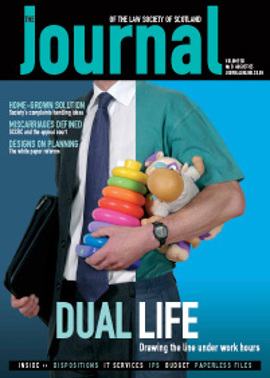When less means better

A GP friend told me recently that her surgery was going “paper light”. Consultation notes were to be kept on screen only and there was to be no troubling of the admin staff for notes and correspondence predating that point unless absolutely unavoidable.
This reduced reliance on paper files is something we have been pushing in parts of our firm for a while. Some three years ago we were attracted to going “paper light”, although in those days folk still harboured notions that it might be possible to become “paper less”. There is of course no such thing as a paperless office – just offices with less paper. That in itself is an admirable goal though – I will not however spoil the fun by explaining why just yet.
The model we have is one of dispensing with correspondence files in a number of our teams, relying instead on electronic files. In the litigation department we still keep files for court papers, of course, and in commercial property they still need to retain missive letters, title deeds, letters of obligation, letters of consent and suchlike. What we do is to jettison the incoming paper correspondence.
How the system works
Whilst we had a vision as to where we wanted to get to with this initiative, without it being a well trodden path for law firms I will be the first to admit that the mechanics have been developed as much by trial and error as by design. I asked one of my colleagues in the burgeoning IT department what our spend on IT support for our electronic files had been and it seems that this equates to the cost of a luxury week for two in Bognor Regis. Now at times some of the team probably wished that they had been sent for a break in Bognor, but I hope that the benefits we have gained are a little longer lasting.
The only software that we have purchased is an imaging program that assists with incoming correspondence being scanned into the system and saved into the electronic case files, or “case plans” as they are called in our case management system. The rest we have been able to design and adapt as we have gone along.
The system is remarkably simple. The mail is opened in the mailroom and distributed to the partners concerned. No change there. The partner then passes the mail to a secretary who scans the letters into the system and indexes them into the relevant case plan. The hard copy is then passed back to the fee earner who then does whatever is necessary in actioning the incoming letter. Thereafter though, instead of putting the letter into a filing tray it goes into a box for shredding. Whilst I am sure none of our profession admit to letting personal grudges affect our attitude to clients’ work, it is liberating shredding some letters more than others!
Where teams are still maintaining paper correspondence files, the case plan includes an electronic copy of all documents prepared in-house. Attendance notes, letters, drafts etc are all stored in chronological order for access later if need be. Those working with imaged files though also have their incoming correspondence interspersed with the outgoing material. It is found in chronological order as well, in exactly the same way as would be the case in a paper file. If anyone wishes to check the file they can simply look the case up on screen and scroll through a list of documents for the case or search for a particular word in the document title.
Any problems?
The first difficulty in introducing a system of imaged files is that, as with all changes, there can be resistance from certain quarters. Willingness to adopt changes in working practices can be inversely proportional to the number of years since completing an apprenticeship/traineeship. Introducing a system such as this would be difficult on an extended basis. Our experience has been that it is easier to introduce imaging to selected teams incrementally. It is also important to ensure that all those who might work on a particular case will adopt the system. It simply does not work where some are working with paper and some not.
The second difficulty is that it is admittedly more time consuming to scroll through an electronic file or case plan and double click to open up specific documents, than it is to flick through a paper file when you “know what you are looking for”.
The third difficulty is that when all your files are stored electronically you are entirely dependent on there being a power supply to your premises. Despite this being 2005, in certain areas electricity supplies are more dependable than in others and in the centre of Edinburgh various firms have already had the misfortune this year to be plunged into darkness by mysterious problems at sub-stations.
There are however advantages that significantly outweigh these issues.
What are the benefits?
SEARCHING FILES
When a document is saved into a case plan it can be given a meaningful narrative. This means that the fee earner can tell more or less what the document relates to without opening it. This reduces the time otherwise taken in opening up electronic documents that are not what they were thought to be. Having useful narratives (for example “letter from client re settlement instructions” means that you can search across a case and pull up all those documents where the narrative includes a particular word – “settlement” for instance. As long as you have a protocol as to what narrative is ascribed to particular items it can save you a great deal of time when working with what would have been a large correspondence file if you can immediately identify all letters or documents relating to a particular topic. This saves you time and therefore either saves the client money or lets you run fixed price work more profitably.
Remote working
Many are looking for more flexible working practices. One thing that often ties people to their office is the need to have client files accessible to progress work. Assuming you can access your server from outwith the office, if you have a system of imaging incoming documents (as well as storing your own internally generated documentation electronically of course) it is possible to access the client file without being anywhere near the office. For those wishing to work from home as an alternative to or in addition to traditional working hours this can be a real boon. For those with more than one office it avoids the need to cart files around from office to office. The risk of leaving a file on a train or in a taxi is also avoided! The flexibility it affords is one of the primary benefits of imaged files.
Disaster recovery
Most IT systems will be backed up regularly. If the unthinkable happens and your premises are affected by fire or flood, if working with imaged files the backup tapes will allow you to get up and running again with more or less the entire file available, excluding of course any documents saved since the last backup tape was made. Large commercial clients are interested in the robustness of lawyers’ IT systems and this is an additional attraction to them.
Cost issues
Apart from any software costs, the other additional cost involved in an imaged file system is the time taken up in imaging and indexing the documentation into the electronic file. There are however cost savings. Where there is no correspondence file there is no need for a file copy letter or for attendance notes to be printed, thereby saving considerably on paper and printing costs. Email is becoming the communication method of choice for some clients, although we have all printed off huge exchanges of emails of doubtful value. With electronic files these can be saved into the case plan without printing them off at all. Where there is no filing you can reduce the dependency on filing staff. Fewer files mean less storage space and more space for fee earners. At the end of the case, instead of sending files for archiving, the electronic version can be stored indefinitely at virtually no cost. The file can also be recovered from archive without paying a handling charge.
Client access
Increasingly firms are allowing clients access to certain information via secure extranets. Our clients can ask for access to their files through an extranet, and in addition to seeing the documents created in house and matter-specific financial information the client can see incoming documents. If for instance they want to check whether the solicitor has heard from a third party they can check online without incurring costs in calling the solicitor, unless of course they wish to.
EASIER TIME RECORDING
Case management systems of one sort or another are in use in more and more firms. Experience suggests that the more integrated your working systems are, the more efficiently the work can be progressed and the easier it is to capture chargeable time. If you are working in an electronic file within the same environment it is a further aid to capturing on a “real time” basis the time spent working on a matter.
Where next?
We are still developing our imaging systems. The next major development is likely to be the centralised imaging of incoming mail as part of the mailroom function, with the imaged document then being emailed to the fee earner for saving into the case plan. That process would be simplified if a code could be included on the incoming document – such as a client and matter reference or a bar code perhaps where the document has been created in-house and sent to the client.
Full text searching within documents instead of across document narratives is available with better systems just around the corner, and a very real benefit would be obtained by allowing third parties such as counsel access to documents online, rather than maintaining a duplicate of the office papers for counsel’s use.
We started this process unsure of how it would work. As a precaution we retained the hard copy of any incoming correspondence so that an old style file could be created if we had to abandon the system. After a while confidence grew and those hard copies were shredded. The majority of those working with electronic files would now not go back and that has to be the proof of the pudding.
Ewan McIntyre, Head of Litigation Division, Morton Fraser
In this issue
- Prosecuting bigotry offences
- A hotter than average July
- Advice for all, but what about justice?
- Calling time
- The anti-avoidance drive
- The best option?
- Radical design
- Miscarriages of justice
- Information technology
- IPS... keeping a watchful eye
- When less means better
- Reality check - not Big Brother
- A clear duty
- Missing a generation
- Does age matter?
- Fair picture?
- Book debts: the final word?
- Website reviews
- Book reviews
- Challenging the sacred cows of conveyancing






